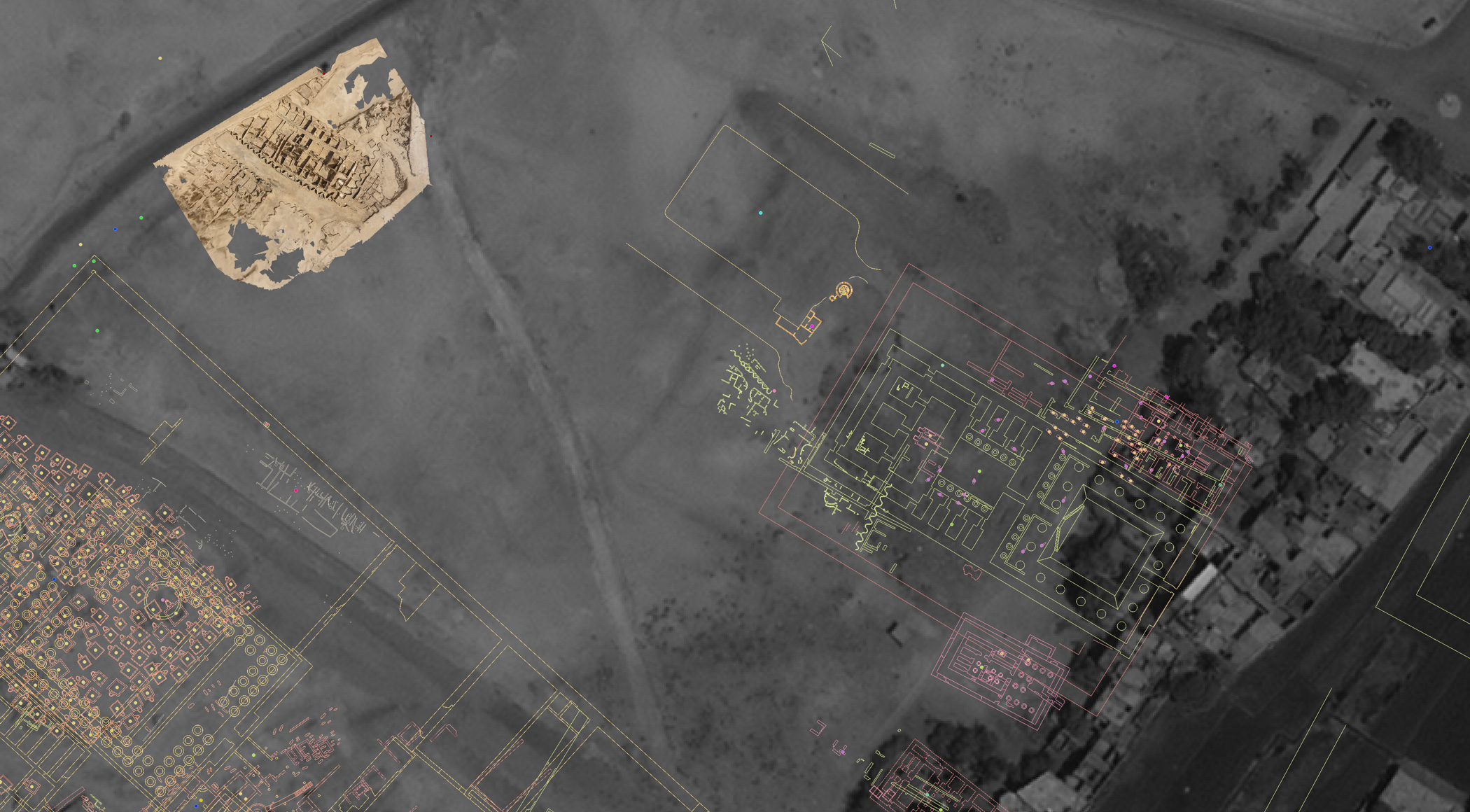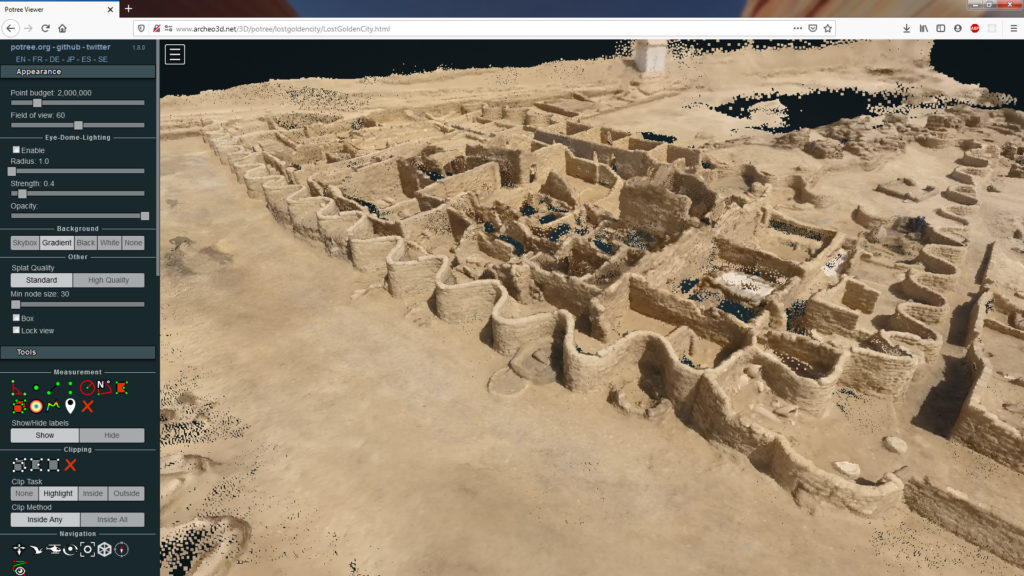
In April 2021, Dr Zahi Hawass, former head of the Supreme Council of Antiquities and Mostafa el-Waziri, its current director, have announced the discovery of a huge site in Western Thebes, in the vicinity of Medinet Habu. This excavation site is actually a major window opened for the knowledge of the domestic and artisans’ quarters settled at the time of Amenhotep III, probably related to the ambitious master plan, both urban and monumental, initiated by the kings of the XVIIIth dynasty.
This site, with its serpentine walls, seems to continue what was already found by Robichon and Varille in the 1930’s during the excavations of the Amenhotep son of Hapu temple, 130 meters away, where other workshops and such typical walls were uncovered. What is interesting to notice is that both sets of remains share the same architectural characteristics and a main orientation, itself aligned on the enclosure walls of the great temple of Amenhotep III.

This new excavation is interesting, not only for the material, already well known and plethoric in Thebes area, but mostly by the taphonomic processes (the ‘sedimentation’ of this site) contributing in the record of major events (such as climatic, historic) which occured before, during and after the use of these buildings, and also by the possibility to date them according to the material, and, of course, not to speak about the daily life of the ordinary people, which was occluded by the search for more prestigious remains since the beginning of egyptology.
As well, we know, from el-Bialy’s excavations in the 1990’s, and Hölscher’s in the 1930’s, that a late necropolis (ptolemaic, roman and byzantine) was settled on top of the remains of the temples of Tutankhamon/Ay/Horemheb and Amenhotep son of Hapu and, likely, over the settlement being currently excavated. This necropolis extends north to the modern road, towards the Valley of the Queens, where the current excavations seems to proceed nowadays, in the quest for the ‘Lost Golden City’. It’s probably a unique, – and last -, opportunity to understand more what was skimmed through, and definitely lost, by the archaeologists of the last centuries.
Read more :
- C. Robichon, A. Varille, A. Le temple du scribe royal Amenhotep, fils de Hapou, (= FIFAO 11), Le Caire, 1936.
- U. Hölscher, The Excavation of Medinet Habu 1, General Plans and Views, (= OIP 21), Chicago, 1934.
- M. el-Bialy, « Découverte d’une nécropole tardive aux environs de Gurnet Murrai », Memnonia 3, 1992, pp. 83-87.
- O. Siegel, « The Development and Function of Serpentine/Sinusoidal Walls », JARCE 52, 2016, pp. 55-91.
- A.-B. Pimpaud, « Une carte archéologique de Thèbes-Ouest: élaboration d’un SIG pour la connaissance du patrimoine thébain », Archeologia e Calcolatori Supplemento 3, 2012, pp. 175-184.
- Archaeological map of Western Thebes (slideshow)
See more :


Zahi Hawass’ excavations in 2020-2021 
Zahi Hawass’ excavations in 2020-2021 
Zahi Hawass’ excavations in 2020-2021
